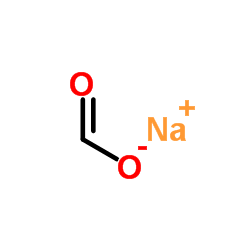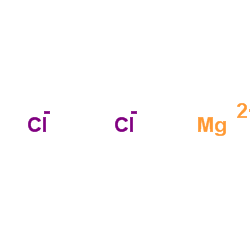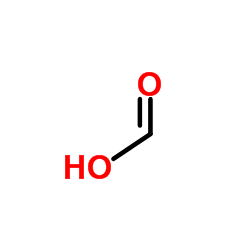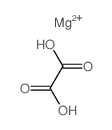Formic acid, magnesiumsalt (2:1)

Formic acid, magnesiumsalt (2:1) structure
|
Common Name | Formic acid, magnesiumsalt (2:1) | ||
|---|---|---|---|---|
| CAS Number | 557-39-1 | Molecular Weight | 70.33040 | |
| Density | 1.038 g/mL at 20ºC | Boiling Point | 100.6ºC at 760 mmHg | |
| Molecular Formula | CH2MgO2++ | Melting Point | 8.4ºC | |
| MSDS | USA | Flash Point | 29.9ºC | |
| Name | Formic acid magnesium salt |
|---|---|
| Synonym | More Synonyms |
| Density | 1.038 g/mL at 20ºC |
|---|---|
| Boiling Point | 100.6ºC at 760 mmHg |
| Melting Point | 8.4ºC |
| Molecular Formula | CH2MgO2++ |
| Molecular Weight | 70.33040 |
| Flash Point | 29.9ºC |
| Exact Mass | 69.99050 |
| PSA | 37.30000 |
| LogP | 0.33670 |
| InChIKey | GMDNUWQNDQDBNQ-UHFFFAOYSA-L |
| SMILES | O=C[O-].O=C[O-].[Mg+2] |
|
SECTION 1: Identification of the substance/mixture and of the company/undertaking Product identifiers : Basosiv™ M050 Product name REACH No.: A registration number is not available for this substance as the substance or its uses are exempted from registration, the annual tonnage does not require a registration or the registration is envisaged for a later
registration deadline. CAS-No.: 557-39-1 Relevant identified uses of the substance or mixture and uses advised against Identified uses: Laboratory chemicals, Manufacture of substances SECTION 2: Hazards identification Classification of the substance or mixture Not a hazardous substance or mixture according to Regulation (EC) No. 1272/2008. This substance is not classified as dangerous according to Directive 67/548/EEC. Label elements This substance is not classified as dangerous according to Directive 67/548/EEC. Other hazards - none SECTION 3: Composition/information on ingredients Substances Synonyms: Magnesium formate Formula: C2H2MgO4 Molecular Weight: 114,34 g/mol CAS-No.: 557-39-1 EC-No.: 209-173-9 No components need to be disclosed according to the applicable regulations. SECTION 4: First aid measures Description of first aid measures If inhaled If breathed in, move person into fresh air. If not breathing, give artificial respiration. In case of skin contact Wash off with soap and plenty of water. In case of eye contact Flush eyes with water as a precaution. If swallowed Never give anything by mouth to an unconscious person. Rinse mouth with water. Most important symptoms and effects, both acute and delayed The most important known symptoms and effects are described in the labelling (see section 2.2) and/or in section 11 Indication of any immediate medical attention and special treatment needed no data available SECTION 5: Firefighting measures Extinguishing media Suitable extinguishing media Use water spray, alcohol-resistant foam, dry chemical or carbon dioxide. Special hazards arising from the substance or mixture Carbon oxides, Magnesium oxide Advice for firefighters Wear self contained breathing apparatus for fire fighting if necessary. Further information no data available SECTION 6: Accidental release measures Personal precautions, protective equipment and emergency procedures Avoid dust formation. Avoid breathing vapours, mist or gas. For personal protection see section 8. Environmental precautions Do not let product enter drains. Methods and materials for containment and cleaning up Sweep up and shovel. Keep in suitable, closed containers for disposal. Reference to other sections For disposal see section 13. SECTION 7: Handling and storage Precautions for safe handling Provide appropriate exhaust ventilation at places where dust is formed.Normal measures for preventive fire protection. For precautions see section 2.2. Conditions for safe storage, including any incompatibilities Store in cool place. Keep container tightly closed in a dry and well-ventilated place. Specific end use(s) A part from the uses mentioned in section 1.2 no other specific uses are stipulated SECTION 8: Exposure controls/personal protection Control parameters Components with workplace control parameters Exposure controls Appropriate engineering controls General industrial hygiene practice. Personal protective equipment Eye/face protection Use equipment for eye protection tested and approved under appropriate government standards such as NIOSH (US) or EN 166(EU). Skin protection Handle with gloves. Gloves must be inspected prior to use. Use proper glove removal technique (without touching glove's outer surface) to avoid skin contact with this product. Dispose of contaminated gloves after use in accordance with applicable laws and good laboratory practices. Wash and dry hands. The selected protective gloves have to satisfy the specifications of EU Directive 89/686/EEC and the standard EN 374 derived from it. Body Protection Choose body protection in relation to its type, to the concentration and amount of dangerous substances, and to the specific work-place., The type of protective equipment must be selected according to the concentration and amount of the dangerous substance at the specific workplace. Respiratory protection Respiratory protection is not required. Where protection from nuisance levels of dusts are desired, use type N95 (US) or type P1 (EN 143) dust masks. Use respirators and components tested and approved under appropriate government standards such as NIOSH (US) or CEN (EU). Control of environmental exposure Do not let product enter drains. SECTION 9: Physical and chemical properties Information on basic physical and chemical properties a) AppearanceForm: crystalline Colour: colourless b) Odourno data available c) Odour Thresholdno data available d) pHno data available e) Melting point/freezing100 °C point f) Initial boiling point and no data available boiling range g) Flash pointno data available h) Evapouration rateno data available i) Flammability (solid, gas) no data available j) Upper/lowerno data available flammability or explosive limits k) Vapour pressureno data available l) Vapour densityno data available m) Relative densityno data available n) Water solubility1.400 g/l o) Partition coefficient: n- no data available octanol/water p) Auto-ignitionno data available temperature q) Decompositionno data available temperature r) Viscosityno data available s) Explosive propertiesno data available t) Oxidizing propertiesno data available Other safety information no data available SECTION 10: Stability and reactivity Reactivity no data available Chemical stability Stable under recommended storage conditions. Possibility of hazardous reactions no data available Conditions to avoid no data available Incompatible materials Strong oxidizing agents Hazardous decomposition products Other decomposition products - no data available In the event of fire: see section 5 SECTION 11: Toxicological information Information on toxicological effects Acute toxicity no data available Skin corrosion/irritation no data available Serious eye damage/eye irritation no data available Respiratory or skin sensitisation no data available Germ cell mutagenicity no data available Carcinogenicity IARC:No component of this product present at levels greater than or equal to 0.1% is identified as probable, possible or confirmed human carcinogen by IARC. Reproductive toxicity no data available Specific target organ toxicity - single exposure no data available Specific target organ toxicity - repeated exposure no data available Aspiration hazard no data available Additional Information RTECS: Not available To the best of our knowledge, the chemical, physical, and toxicological properties have not been thoroughly investigated. SECTION 12: Ecological information Toxicity no data available Persistence and degradability no data available Bioaccumulative potential no data available Mobility in soil no data available Results of PBT and vPvB assessment PBT/vPvB assessment not available as chemical safety assessment not required/not conducted Other adverse effects no data available SECTION 13: Disposal considerations Waste treatment methods Product Offer surplus and non-recyclable solutions to a licensed disposal company. Contaminated packaging Dispose of as unused product. SECTION 14: Transport information UN number ADR/RID: -IMDG: -IATA: - UN proper shipping name ADR/RID: Not dangerous goods IMDG: Not dangerous goods IATA:Not dangerous goods Transport hazard class(es) ADR/RID: -IMDG: -IATA: - Packaging group ADR/RID: -IMDG: -IATA: - Environmental hazards ADR/RID: noIMDG Marine pollutant: noIATA: no Special precautions for user no data available SECTION 15 - REGULATORY INFORMATION N/A SECTION 16 - ADDITIONAL INFORMATION N/A |
| Safety Phrases | 23-24/25 |
|---|---|
| RIDADR | NONH for all modes of transport |
|
~% 
Formic acid, ma... CAS#:557-39-1 |
| Literature: KEMIRA OYJ Patent: WO2004/18404 A1, 2004 ; Location in patent: Page 17-19 ; |
|
~% 
Formic acid, ma... CAS#:557-39-1 |
| Literature: SAJET DEVELOPMENT LLC; MILLER, Jorge; KLING MILLER, Luisa Patent: WO2013/119230 A1, 2013 ; Location in patent: Paragraph 0035; 0036 ; |
|
~% 
Formic acid, ma... CAS#:557-39-1 |
| Literature: Souchay, A.; Groll, C. Journal fuer Praktische Chemie (Leipzig), 1859 , vol. 76, p. 474 - 474 |
|
~% 
Formic acid, ma... CAS#:557-39-1 |
| Literature: Gorski, A.; Krasnicka, A. Journal of Thermal Analysis, 1987 , vol. 32, p. 1243 - 1252 |
|
Bionanowhiskers from jute: preparation and characterization.
Carbohydr. Polym. 92(2) , 1116-23, (2013) Bionanowhiskers were extracted from jute by acid hydrolysis. At first cellulose microfibrils were formed by alkali treatment. Addition of an acid to the microfibrils triggered the formation of cellulo... |
|
|
Monoclonal antibodies selective for α-synuclein oligomers/protofibrils recognize brain pathology in Lewy body disorders and α-synuclein transgenic mice with the disease-causing A30P mutation.
J. Neurochem. 126(1) , 131-44, (2013) Inclusions of intraneuronal alpha-synuclein (α-synuclein) can be detected in brains of patients with Parkinson's disease and dementia with Lewy bodies. The aggregation of α-synuclein is a central feat... |
|
|
Density functional theory study on the adsorption and decomposition of the formic acid catalyzed by highly active mushroom-like Au@Pd@Pt tri-metallic nanoparticles.
Phys. Chem. Chem. Phys. 15(13) , 4625-33, (2013) Local structures and adsorption energies of a formic acid molecule and its decomposed intermediates (H, O, OH, CO, HCOO, and COOH) on highly electrocatalytically active mushroom-like Au-core@Pd-shell@... |
| Magnesiumhexafluorsilikat |
| magnesium Formate |
| magnesium hexafluorosilicate |
| siliconfluoridemagnesiumsalt |
| Magnesiumsilicofluorid |
| Magnesium fluorosili |
| MAGNESIUM SILICOFLUORIDE |
| formic acid,magnesium formate |
| Caswell no. 532 |
| magnesium(II) formate |
| fluosilicicacidmagnesiumsalt |
| MAGNESIUMHEXAFLUOSILICATE |
| Ameisensaeure,Magnesiumformiat |






 CAS#:64-18-6
CAS#:64-18-6 CAS#:547-66-0
CAS#:547-66-0